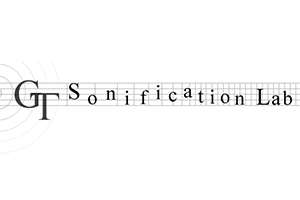Most sound comes through our ears. However, it is also possible to pass vibrations through the bones of the head and bypass much of the normal hearing pathway. This is called bone conduction audio and can be used in situations where the ears need to be plugged, or where you need to leave the ears open to hear ambient sounds. We are studying the psychoacoustics as well as the applied aspects of bone conduction audio. A current application being investigated is the scenario of the distracted cyclist or pedestrian. This research is aimed at determining additional ways of further improving awareness of ambient sounds, in addition to using bone conduction devices, through techniques such as virtual spatialization or audio filters. This research will improve the safety of the many pedestrians and cyclists who currently wear headphones while going about their daily lives.

The Georgia Tech Sonification Lab is an interdisciplinary research group based in the School of Psychology and theSchool of Interactive Computing at Georgia Tech. Under the direction of Prof. Bruce Walker, the Sonification Lab focuses on the development and evaluation of auditory and multimodal interfaces, and the cognitive, psychophysical and practical aspects of auditory displays, paying particular attention to sonification. Special consideration is paid to Human Factors in the display of information in "complex task environments," such as the human-computer interfaces in cockpits, nuclear powerplants, in-vehicle infotainment displays, and in the space program.
[Random Image of Auditory Interface] Since we specialize in multimodal and auditory interfaces, we often work with people who cannot look at, or cannot see, traditional visual displays. This means we work on a lot of assistive technologies, especially for people with vision impairments. We study ways to enhance wayfinding and mobility, math and science education, entertainment, art, music, and participation in informal learning environments like zoos and aquariums.
The Lab includes students and researchers from all backgrounds, including psychology, computing, HCI, music, engineering, and architecture. Our research projects are collaborative efforts, often including empirical (lab) studies, software and hardware development, field studies, usabilty investigations, and focus group studies.



